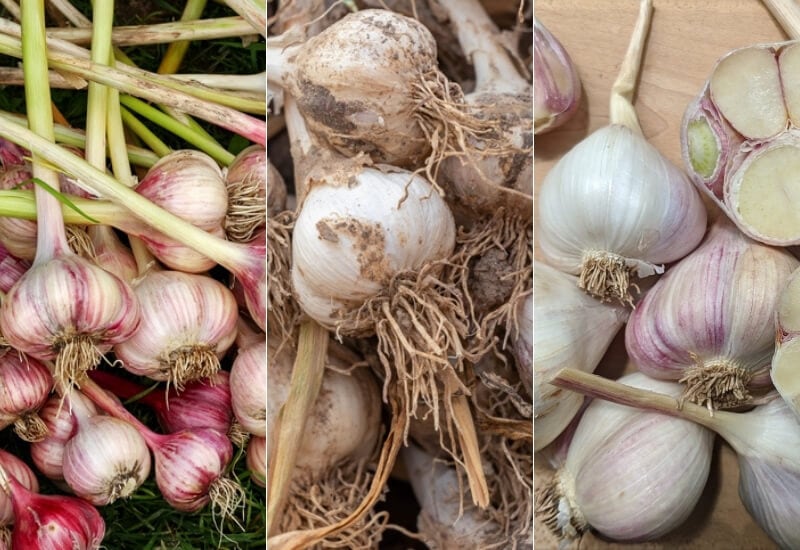
Garlic is one of those vegetables that nearly every person loves. Would culinary dishes even taste good without a bit of garlic? It seems like every dinner you make calls for a few garlic cloves or a teaspoon of garlic powder. If you spend any time in the kitchen, you might decide it’s time to grow different types of garlic in your garden.
Garlic is a species of bulbous flowering plant in the onion genus Allium which includes more than 700 species, encompassing several different varieties. There are two types of garlic: softneck garlic (Allium sativum) and hardneck garlic (Allium ophioscorodon).
Each has its own characteristics and flavor profile, as well as different maturing rates.
No matter which types of garlic you decide to grow, they’re all easy to maintain, requiring little upkeep, and adapt to different climates. So, if you’re ready to start growing garlic, let’s dive into all of the garlic varieties to help you decide which one is right for your garden.
The Two Types of Garlic
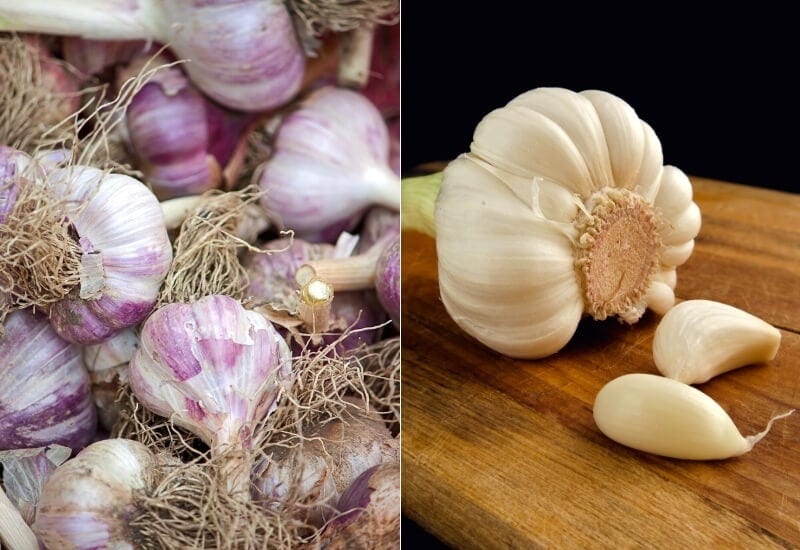
You can grow in your garden hundreds of garlic varieties, but most can be lumped into one of the two main types of garlic: hardneck and softneck.
Once you break the garlic into those groups, there are categories in those groups, but let’s start by understanding the difference between hardneck and softneck garlic.
Hardneck Garlic
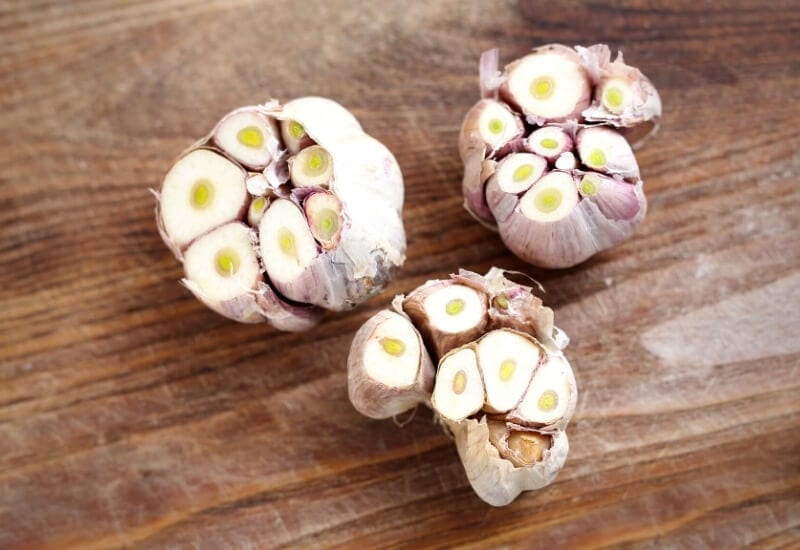
Hardneck garlic is the type you are more than likely most familiar with because it’s the prominent cooking garlic. It produces larger cloves, but the bulbs might have fewer cloves when compared to the softneck type. Hardneck bulbs have between two and ten cloves.
One of the easiest ways to identify hardneck is by the woody, stiff stalks. When you buy garlic from the store, you’ve probably noticed the inch or two of a woody stem that they leave attached.
The wood-like stem is what sends out green scapes in the spring. It’s best to cut off the scapes in the spring, which encourages your garlic plants to send more energy into growing large bulbs. Don’t waste the scapes! They can be turned into delicious recipes.
For those living in cold climates, hardneck garlic is the preferred type to grow because it’s hardier and can withstand colder temperatures. However, the bulbs take longer to mature. It’s worth the trade-off because you can find dozens of different varieties to grow, and they all have intense flavors.
Softneck Garlic
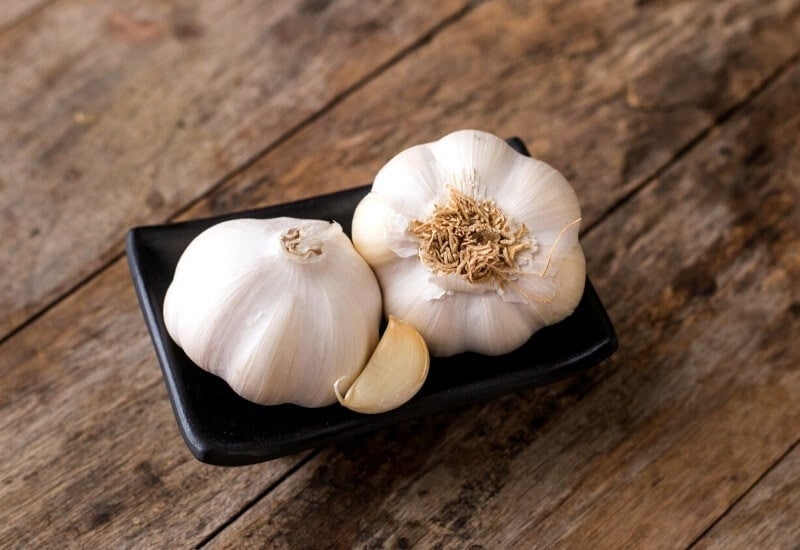
Softneck garlic comes from hardneck garlic, and it’s a common type you’ll see in the grocery stores because it does mature faster. You’ll find them at farmer’s markets as well.
Softneck garlic has a few pros that make it an excellent choice for many gardeners. It adapts to more climate varieties, produces more bulbs per plant, and doesn’t require the scapes to be pruned off for optimal growth.
One of the differences you’ll note is that softneck garlic produces more cloves than hardneck, but the cloves are smaller. The paper that surrounds the cloves is papery and comes in multiple layers, all creamy-white. It feels similar to parchment paper.
The layers surrounding the cloves are essential because they extend the garlic’s shelf life; you can store them for up to eight months in proper conditions. If you want to braid your garlic stems, then you need to grow softneck garlic. Braided garlic is a decorative yet useful way to store and display your garlic cloves.
12 Of The Best Garlic Varieties To Grow In Your Garden
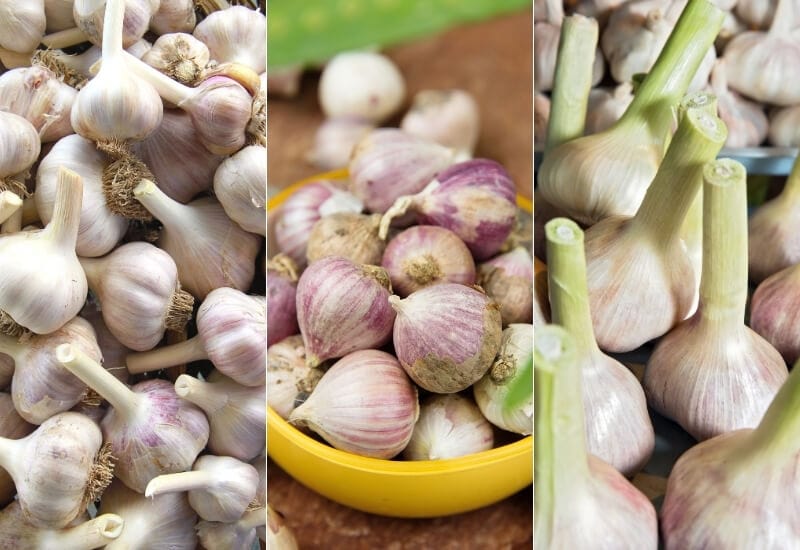
We divided the list of the different types of garlic into hardneck or softneck. That makes it easier for you to find the right ones for you to grow.
Hardneck Garlic Varieties
First, we’re going to look at the different hardneck garlic varieties. You’ll produce a garlic bulb with a rigid central stalk and have an initial harvest or garlic scapes in the spring. For those who live in colder climates, hardneck garlic is a better choice, and the cloves typically have a better flavor.
1. Asiatic Hardneck
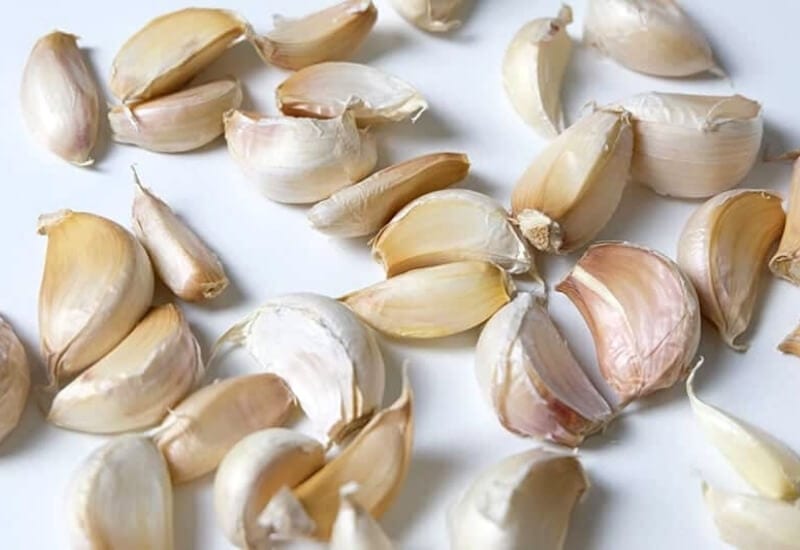
Asiatic hardneck garlic originates in Korea, producing medium-sized bulbs with four to eight cloves in each bulb. Depending on the variety of Asiatic garlic you grow, the flavor ranges from sweet to spicy. Many Asian dishes use this type of garlic because they can add extraordinary flavor and heat to your culinary dishes.
One of the reasons you might want to grow Asiatic garlic is that it stores very well for a hardneck variety. The average shelf life is five to six months, which is impressive.
The Asiatic cloves are brightly colored, a dark purple color, with broad, tall leaves. It looks wonderful in your garden and on your pantry shelves.
The mature size of the plants reaches up to four feet tall. The plants have average moisture needs and need to be grown in full sunlight in well-draining, fertile soil.
2. Creole Hardneck
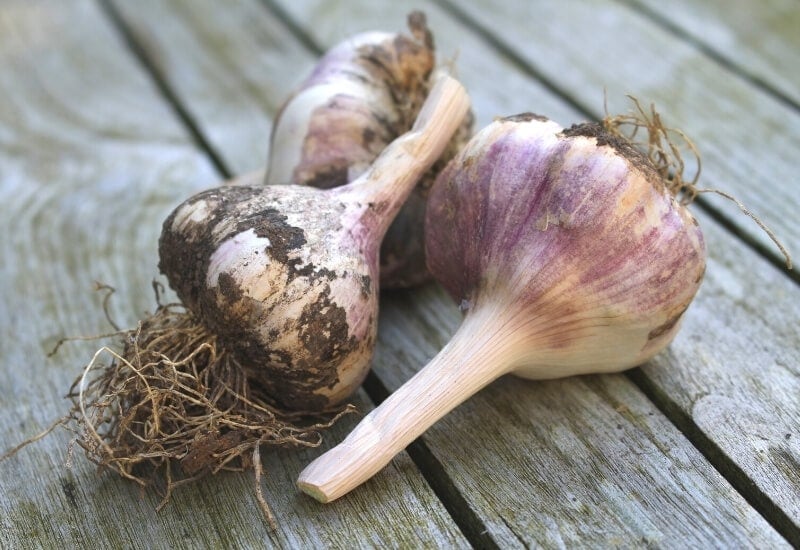
If you live in a bit warmer region, Creole is a great variation for you. Gardeners throughout the southern United States grow this variety, but it won’t fare well if you live in a colder, northern state.
When grown in the ideal climate, Creole hardneck produces small to medium-sized garlic bulbs that have between eight and 12 cloves per bulb. You’ll notice a nutty, delicate flavor with a bit of heat that fades fast. Creole garlic is a popular choice in gourmet cuisine; the flavor is delicious.
The mature size of the greens can be up to six feet tall. Growing Creole garlic is easy; you have average moisture needs and need to grow in full sunlight. Make sure the soil is well-draining and fertile. At the end of the growing season, you’ll have bulbs full of cloves in shades of red and purple.
3. Glazed Purple Stripe Hardneck
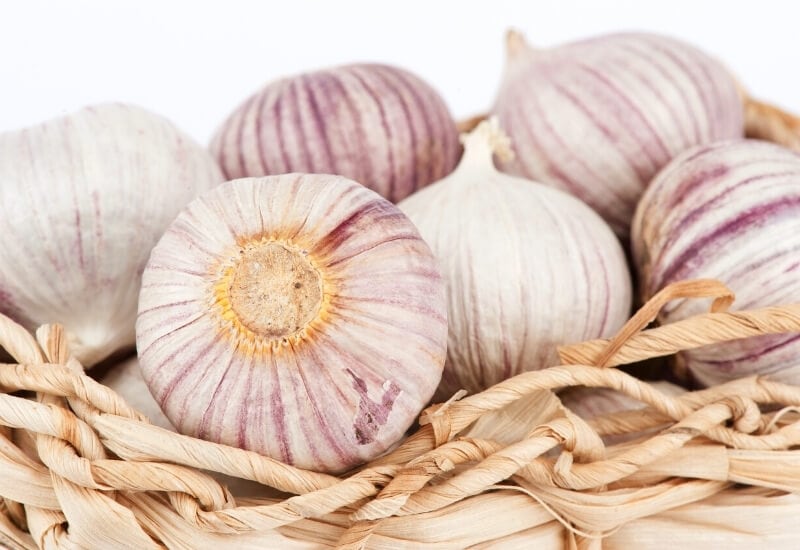
This variety originates in Eastern Europe, so it works well in those same regions in the United States. They prefer cold to mild climates.
Glazed Purple Stripe garlic received their name because of the exterior of the cloves; it’s glossy, sort of like a large gem. The cloves are red to purple with stripes of flashing of silver. Each bulb produces between six and twelve cloves. The paper skin is a bit on the thinner side, so they tend to be more delicate.
However, the taste isn’t as extraordinary as their appearance. Glazed Purple garlic has a mild flavor with a bit of gentle heat. The benefit of growing this variety is that they have an extended shelf-life, lasting five to seven months.
Like most garlic plants, this variety has an average moisture needs, and they need to be grown in full sunlight and well-draining soil. At full maturity, the greens can reach up to five feet tall.
Since these garlic bulbs are more delicate, making it harder to produce them on a larger, commercial-scale, glazed garlic is kept going by heritage conservancies and heirloom family gardeners.
4. Marbled Purple Stripe Hardeck
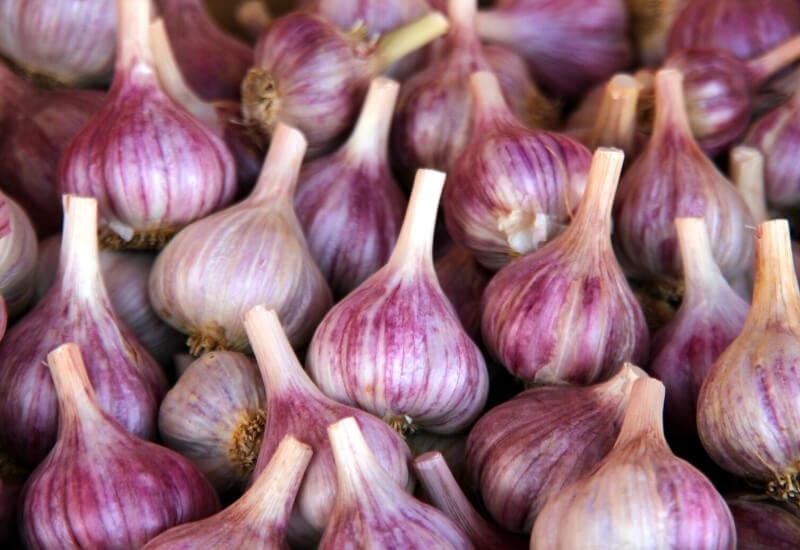
Marbled Purple Stripe garlic originates in Russia and Eastern Europe, so you can expect them to handle a wide range of climate conditions and temperatures.
Marbled Purple Stripe garlic bulbs have a strong flavor, and each bulb contains between four and eight cloves. The cloves have a decorative look with stripes of red and cream and a shiny surface.
This variety stores well for an extended time as well, typically up to seven months. Most people say that this is the best type of garlic for baking garlic.
5. Middle Eastern Hardneck
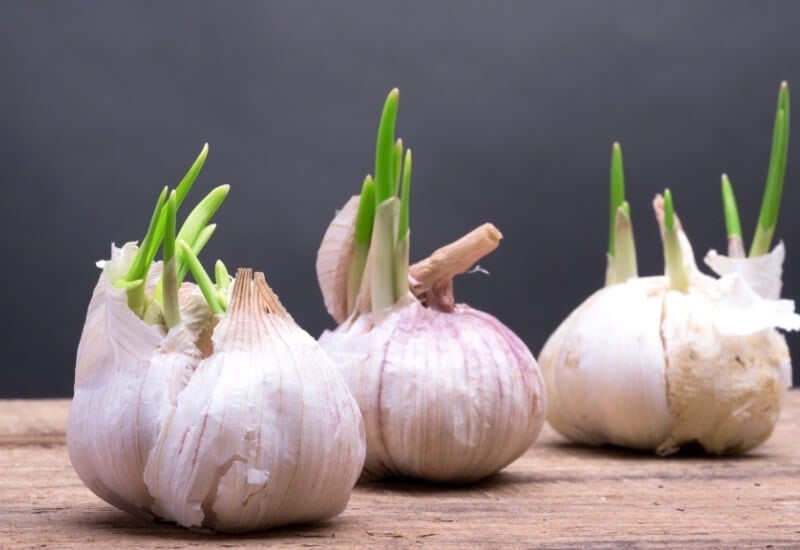
As you might have guessed by looking at the name, this type of garlic comes from the Middle East, so it does prefer warmer growing conditions. They don’t grow as tall as some of the other varieties, only reaching three feet tall.
Middle Eastern garlic has narrow leaves, and the bulbs range in size. Most of the bulbs have a bumpy texture when compared to others.
6. Porcelain Hardneck
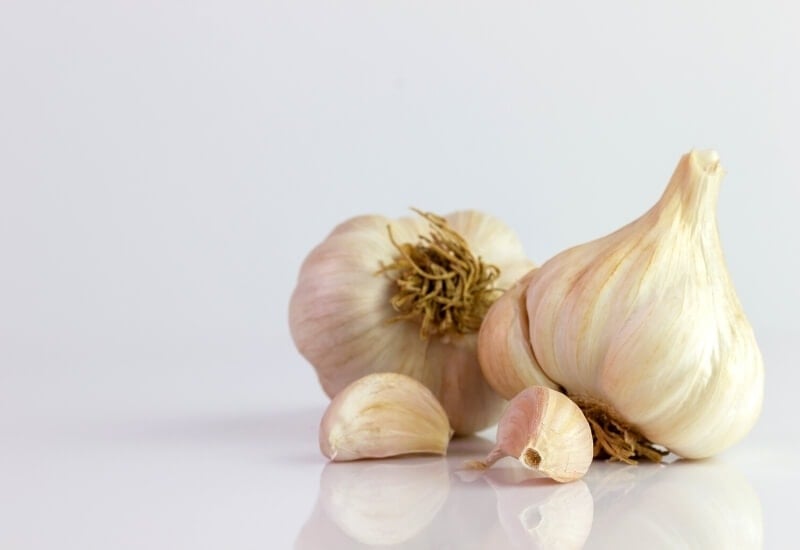
Here is a popular type of garlic that has many varieties you can grow. All Porcelain garlic produces large bulbs with two to six cloves; all of the cloves are large-sized. They’re most noted for their moderate to strong intense flavor and the tall greens that can reach up to six feet tall.
If you want to grow a garlic variety with the traditional garlicky taste you expect, Porcelain garlic is the way to go. It’s an excellent choice for cooking, undoubtedly being one of the most popular types of hardneck garlic for avid chefs.
Porcelain garlic received its name because the skin is so smooth and thick, sometimes with purple markings. The skin has a paper-like texture that glimmers in the light. This garlic stores well with a shelf life of up to eight months.
7. Purple Stripe Hardneck
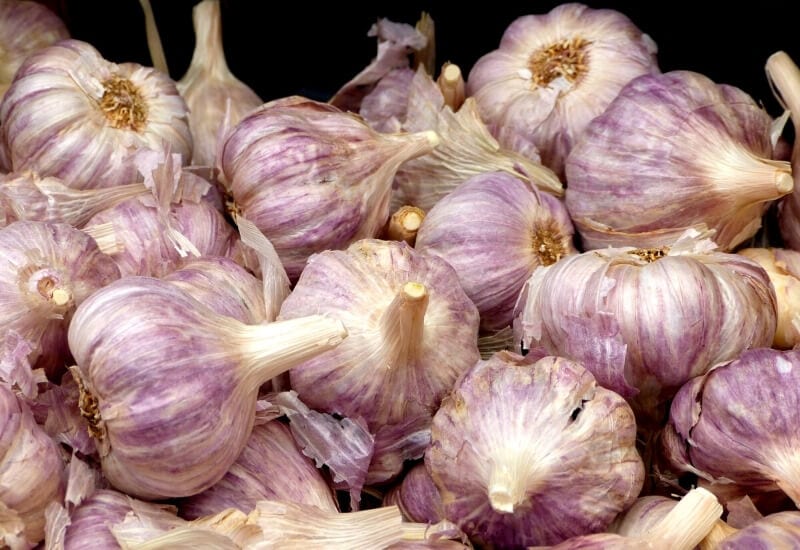
Purple Stripe garlic comes from the Republic of Georgia, and it’s known for having a rich flavor without being too strong and overpowering. When baked, the garlic develops a sweet taste that cooks love. In fact, it becomes so sweet that some use it to make garlic ice cream – seriously!
Purple Stripe garlic grows between three to five feet tall with slender foliage. The bulbs are streaked with purple stripes, and the cloves are tan-colored. Each bulb can contain between eight to 16 cloves.
8. Rocambole Hardneck
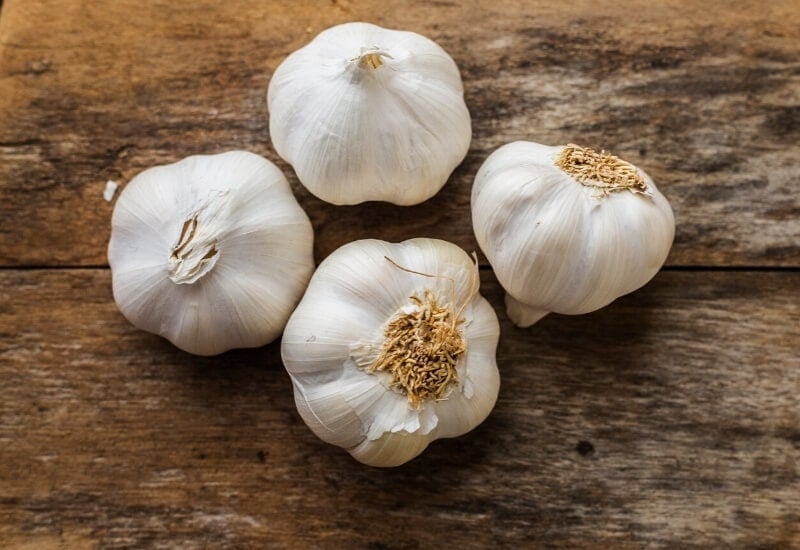
This is one of the best garlic types for gardeners who want to grow hardneck garlic at home. Rocambole garlic bulbs have a robust and full-bodied flavor with loose skin that makes them easy to peel.
Gardeners and cooks all considered rocambole hardneck garlic one with the best flavor, but it can be a bit challenging to grow because they need very cold winters.
The delicious flavor comes with a cost; rocambole garlic is picky about overwatering. If you have a wet year with an abundance of rain, don’t expect your garlic to do well. They also prefer hotter summer than other varieties.
The cloves are tan or red-colored with hard skin, and the bulbs store for a maximum of six months. These plants produce unusual garlic scapes that curl over in a double loop.
9. Turban Hardneck
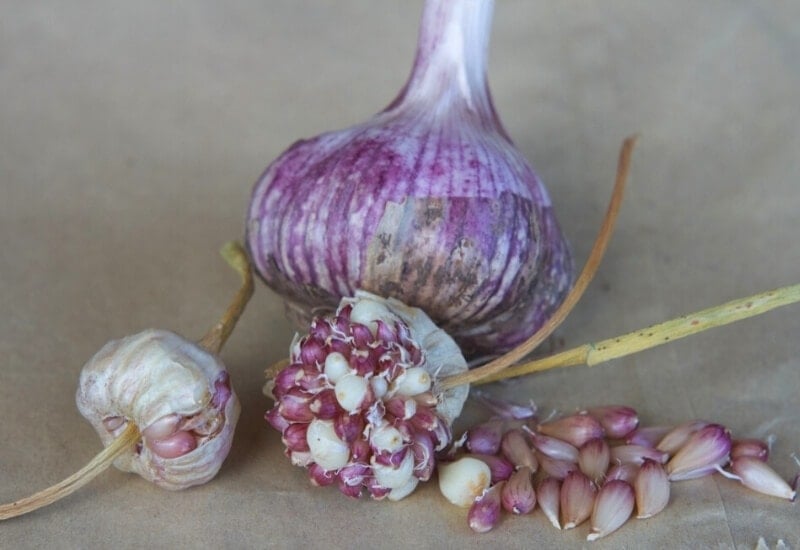
Not as many gardeners grow Turban hardneck garlic; it’s not one of the common types of garlic, and the varieties come from all over the world, including Mexico and Eastern Europe. They have this name because the top of their stalk forms a shape that looks like a turban.
One of the reasons this isn’t a popular type of garlic is that the flavor doesn’t taste like garlic! Instead, it has a hot, fiery taste that will add a distinct flavor to your dishes. While it does taste great, it won’t create that garlic flavor you want.
Turban garlic bulbs are slightly flattened with light purple striped wrapping and chunky cloves. The cloves are tan-colored, and each bulb contains between six and twelve evenly-sized cloves.
Don’t expect these garlic bulbs to store well; they have a short shelf life.
10. Elephant Garlic
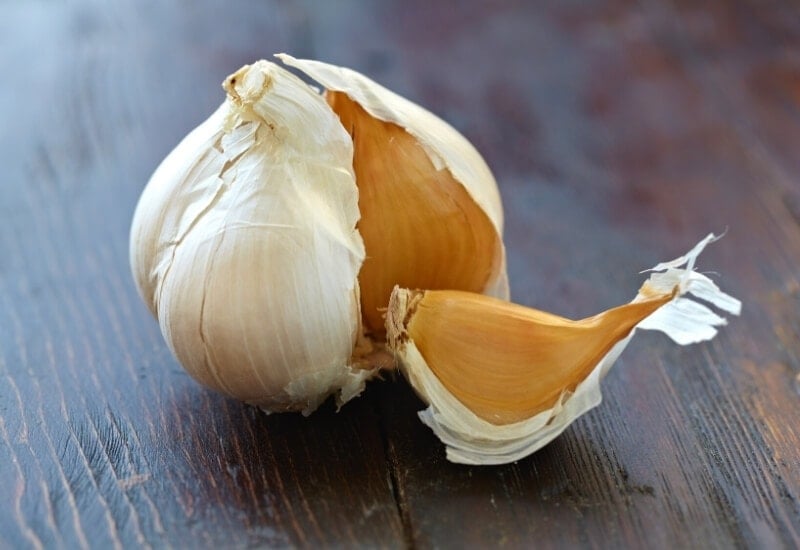
Without a doubt, no garlic list is complete without talking about Elephant garlic, often called Buffalo garlic. This is the larger cousin from the leek family, and while it is garlic, it’s more closely related to onions than to garlic.
You might be able to guess why they’re called Elephant garlic; they grow giant bulbs that can weigh up to one pound each. Each bulb typically contains four to six cloves. It’s a popular choice for its size and mild flavor, so it’s great for those who might not enjoy the strong garlic taste.
Elephant garlic is so popular because the large cloves are easy to peel, making them an excellent cooks’ choice. Since the flavor is mild, these cloves taste great when roasted or cooked in sauces or stir fry dishes.
The only downside is that those who live in cold regions with shorter growing seasons will struggle to grow them because they don’t have enough time for the bulbs to mature.
Softneck Garlic Varieties
If you want to grow the types of garlic that let you braid the stem, you need softneck garlic. You don’t need to trim off the garlic scapes in the spring, and the flavor is milder.
These are best for those who live in USDA zones five and above because they prefer a warmer climate.
11. Artichoke Softneck
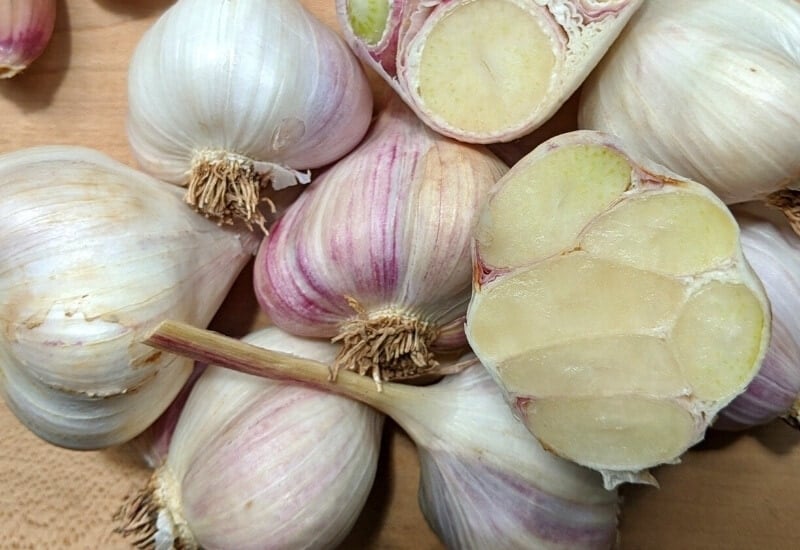
If you want to grow garlic bulbs that have fewer but larger cloves, artichoke softneck garlic is for you. The bulbs typically hold between 12 to 25 cloves in a non-symmetrical pattern.
Artichoke garlic matures early in the growing season, adapting well to a range of growing climates and soil conditions. That’s one of the reasons why these are a popular choice for home gardeners.
All artichoke garlic has a slightly flattened shape with skin that has light purple markings. If you want long storing garlic, they can keep in proper conditions for up to ten months.
12. Silverskin Softneck
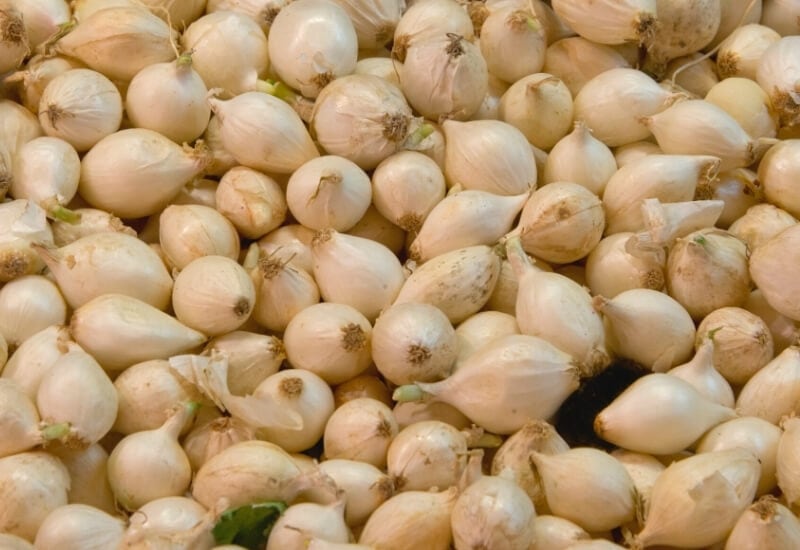
When compared to artichoke softneck garlic, silverskin takes longer to mature and have a wider range of cloves. The bulbs can hold anywhere from eight to 40 cloves in up to five layers. That’s a lot of cloves! Aside from that, these garlic bulbs are plain and dull.
Gardeners don’t always like that silverskin garlic bulbs can be hard to peel, and the irregular size can make it difficult to get all of the cloves out easily. Aside from that, silverskin is the most popular softneck garlic that can be found in grocery stores or farmer’s markets.
Most grow silverskin garlic for one reason – they store the longest. These have the most extended shelf life out of all types of garlic; you can store them for up to 12 months.
Picking the Right Types of Garlic
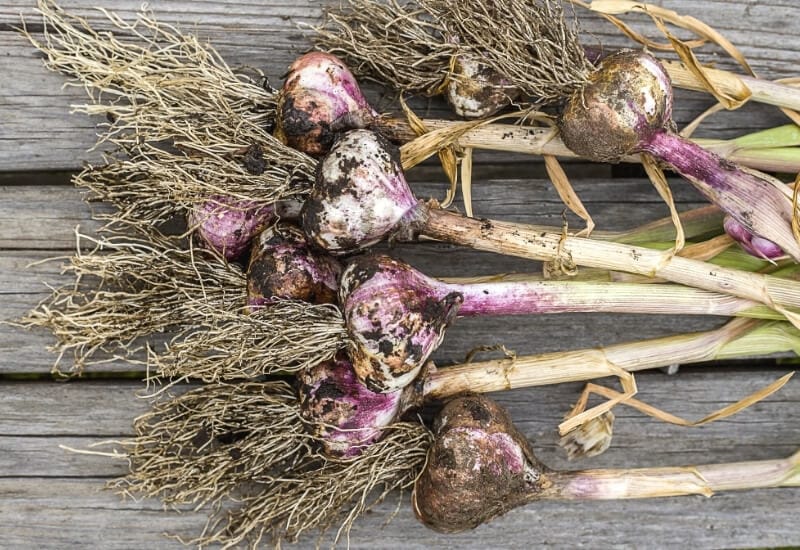
Knowing that there are so many types of garlic can be intimidating; you want to pick the right one for your garden. If you live in a colder region, you’ll want to grow a hardneck variety, and those in warmer climates should opt for softneck garlic.
From there, you can pick the variety and cultivars that you want to grow. Don’t limit yourself! You can grow as many types of garlic as your harvest desires. You really can never have too much garlic.

Written By
Amber Noyes
Amber Noyes was born and raised in a suburban California town, San Mateo. She holds a master’s degree in horticulture from the University of California as well as a BS in Biology from the University of San Francisco. With experience working on an organic farm, water conservation research, farmers’ markets, and plant nursery, she understands what makes plants thrive and how we can better understand the connection between microclimate and plant health. When she’s not on the land, Amber loves informing people of new ideas/things related to gardening, especially organic gardening, houseplants, and growing plants in a small space.
